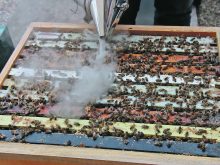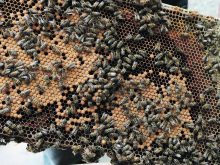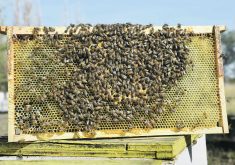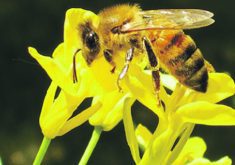Survey will look at hive samples from different regions to determine problem pests
BEAVERLODGE, Alta. —Bees may be tiny, but they can suffer from a lot of health problems.
A four-year national health survey plans to take a snapshot of the health of Canada’s honeybees
“We hope to have a base line of disease, pests and parasites that are common in Canada,” said Carlos Castillo, manager of the Grande Prairie Regional College’s National Bee Diagnostic Centre.
Some provinces have conducted surveys over the years, but this will be the first national survey that is conducted with identical protocol.
Read Also

Soybean market still figuring out implications of China-U.S. pact
Soybean futures had a muted reaction to the U.S. trade deal with China as the market tries to figure out the nuances of the deal.
“We want to create a national database of parasites,” said Castillo.
The goal is to sample .5 percent of the hives in Canada, or about 360,000 hives, to see what diseases are in each region and to determine what diseases Canada can say it doesn’t have.
Steve Pernal, a bee scientist with Agriculture Canada’s Beaverlodge Research Farm, said a wide range of diseases, parasites and pathogens could affect the health of honeybees.
“Keeping colonies alive is much more complicated than it used to be,” said Pernal.
“There are many, many more pests and diseases than before.”
The survey will be three parts:
- A quarter cup of live bees will be taken from the centre frames of the hives and shipped to the laboratory in Beaverlodge.
- Another quarter cup will be immersed in alcohol before they’re shipped to the lab.
- The technician sampling the bees will also take a “knock” test looking for tropilaelaps, a parasitic mite common in Asia and Indonesia that has the potential to devastate Canadian hives.
In the knock test, the brood frame is knocked front and back four times and the debris that falls out of the frame is collected, put in alcohol and shipped to the lab for inspection.
Castillo said the survey will focus on producers with 100 or more hives.
Samples will be taken from hives in Alberta and Manitoba for the next four years, and staff will begin taking samples from bees in British Columbia and Saskatchewan next year.
Samples will be taken from Ontario, Quebec and the Atlantic provinces in the last two years of the survey.
Castillo said researchers know there are differences in bee pests between regions, but this will give a clear picture of the differences.
The survey also hopes to identify the diseases that are not in Canada and can’t be used as a trade barrier.
Imported queen bees from New Zealand, California and Hawaii are on the rise, and Castillo wants to ensure Canadian producers are not importing diseases with the queens.















